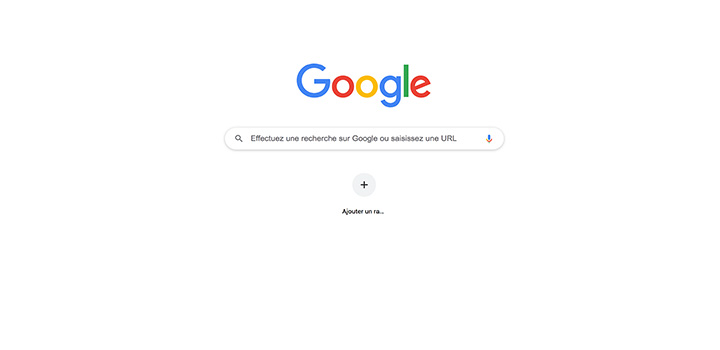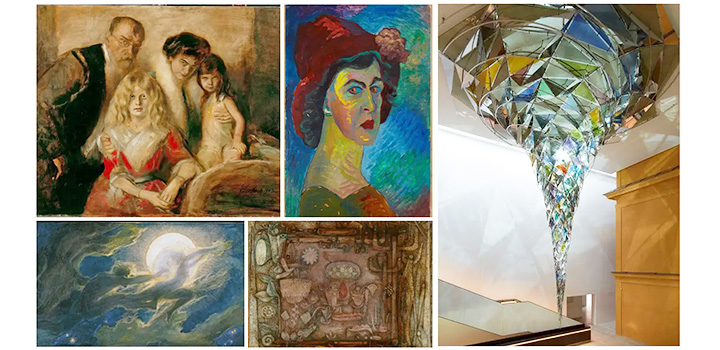
Trends in cultural searches on Google France
The Covid and the confinements have upset the habits of the French. The ways of working and communicating have changed, as well as the way of cultivating oneself. If music, literature and cinema have already largely invested the web, it was not necessarily the case for visual arts, exhibitions and shows. Cultural actors must reinvent themselves to continue to be visible and the French must change their way of understanding culture. What are the trends in cultural searches on Google France and what are the methods for reaching the French?
Digitalizing culture
The behavior of Internet users towards culture has evolved in a situation where it was no longer possible to go to the cinema, see a concert or visit an exhibition. Their thirst for culture is hardly satiated and they are learning to change their consumption. On the side of cultural sites and brands, it was necessary to mobilize to offer consumers another experience of art.
If the limits of travel and the forced closures of cultural sites have given a big blow to leisure, the curious have not said their last word. Digital is becoming the only possible tool to look for a bit of art and nature. Internet queries speak volumes about the interests and needs of the French. Search engine queries for “online zoos” and “online museums” peaked in the weeks of March 15 and December 13.
The Google Trends tool actually shows that queries related to the confined daily life have exploded. For example, the company Babbel, which allows people to learn or improve a language through its application, increased its numbers. Confined, French people had more time to improve their language skills. Babbel recorded an eightfold increase in its audience on certain channels following a tailored marketing campaign.
Another example is the Dutch online ticketing platform Tiqets, which has bounced back. Its proposal? It set up a week-long online festival that offered virtual tours of exhibitions, museum halls and attraction sites.
Google’s weight in art and culture
Google has two major tools for art and culture that show, once again, its indomitable power on the web: Google Arts and Culture and Youtube. According to the Mountain View firm, it is a way to participate in the dissemination of art, to democratize access to culture and facilitate creativity.
Google Arts & Culture
Google Arts and Culture brings together a huge collection of works of art and cultural sites around the world. In 2011, the first museums (Versailles, Tate Britain, New York’s Moma, etc.) authorised the distribution of some of the works of art in their collections. Today, nearly 2000 cultural sites in 80 countries have digitised millions of works, and it is of course the largest art encyclopaedia in the world.
Exhibitions are also accessible online. During the confinements, Google Arts & Culture reportedly saw a surge in visitor numbers. Unfortunately, the company is still discreet about its figures. The platform is constantly increasing its partnerships with new institutions such as the Royal Academy of Arts, the Alte Pinakothek in Munich, the Harvard Art Museum and the London Transport Museum. The aim was to develop immersive experiences and provide easy access to culture where it is not considered “essential” in the eyes of politicians in these times of crisis.
Youtube
The closure of theatres, cinemas and museums has forced the French to access culture in a different way.
Creators on YouTube have shown imagination and creativity to surprise Internet users who indeed believe that the platform allows “personal development”.
A lot of research has been done on “distance learning”. For example, the famous Jamy from the cult TV show “C’est pas sorcier” took advantage of the period of confinement to create his youtube channel. Hundreds of singers performed online, dancers from the Paris Opera danced and members of the Orchestre National de France played Ravel’s Bolero in a video that has been viewed more than 3 million times.
Youtube’s performances are constantly increasing and opening up the field of possibilities to people who want to create and address the French. In 2020, more than 360 creators in France have more than 1 million subscribers, an increase of 45% compared to 2019. Content creation on YouTube in France generated €515 million in 2019.
Top culture searches on Google France
Google has revealed some of the most popular search phrases in 2020:
- Wejdene
- Sadek
- Camelia Jordana
- Freeze Corleone
- Moha La Squale
- Lara Fabian
- Johnny Cash
- Kanye West
- Florian Rossi
- Isabelle Boulay
The most searched lyrics on Google in 2020 :
- Bande organisée
- Djomb
- Lettre à une femme
- Les mots bleus
- Jerusalema
The films for which the French asked Google the most questions are not necessarily recent, as few films were released in theatres in 2020.
- Tenet
- 1917
- Black Panther
- The Gentlemen
- Dirty Dancing
This year has undoubtedly left its mark on the French in search of culture, but it is above all the entire sector that has suffered from this situation. Although the cultural actors have given themselves the means to continue to offer the French people the benefits of digital means, the confinements and closures of cultural establishments have hit culture right in the heart. It will take time to recover from the health crisis.
As a web agency specializing in culture, Alioze guides you in your digital marketing strategy, in particular by helping you to identify the most effective keywords for your business, and thus optimise your natural referencing and your visibility in Google search.
Sources :
- Leçons du confinement : comment les marques traversent la crise dans la zone EMEA
- Premières leçons tirées du confinement dans le monde
- Google Arts & Culture à la rescousse du confinement
- Nouveaux contenus et partenaires: Google Arts & Culture étend sa toile pendant le confinement
- Les créateurs YouTube avec les Français en 2020
- L’année en recherches Google
© Google Arts & Culture










Leave a Reply
You must be logged in to post a comment.